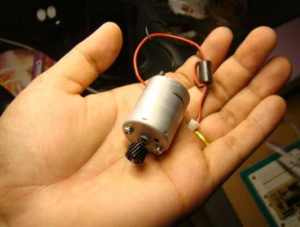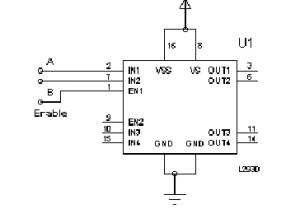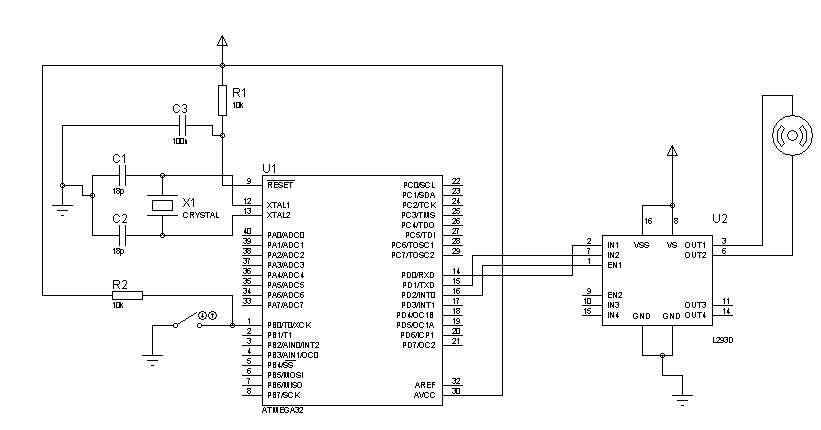What is an AFCI? (Q&A)
Arc Fault Circuit Interrupters (AFCIs) are required by the National Electrical Code for certain electrical circuits in the home. Below are some frequently asked questions about AFCIs and the benefits of installing them in your home.What is an Arc Fault?
Why do we really need Arc Fault Circuit Interrupters (AFCIs)?
How is an Arc Fault detected?
How does an AFCI work?
Type of AFCIs:
Branch/FeederWhat is the difference between and AFCI and Ground Fault Circuit Interrupter (GFCI)?
Combination
AFCI and GFCI Protection
Are there any wiring and installation guidelines?
What is the price of the new safety technology worth?
Why is it important to have an AFCI Breaker installed in your home?
Where are they required to be installed by the National Electrical Code?
Can I have AFCIs installed even if my state or municipality doesn’t require them?
What is an Arc Fault?
Most people are familiar with the term arcing. Arcing may be intended, such as with an arc welder or unintended, such as when a tree falls on a power line during a storm creating a current discharge between conductors or to the ground.
An arc fault is an unintended arc created by current flowing through an unplanned path. Arcing creates high intensity heating at the point of the arc resulting in burning particles that may easily ignite surrounding material, such as wood framing or insulation. The temperatures of these arcs can exceed 10,000 degrees Fahrenheit.
Top of page
Why do we really need Arc Fault Circuit Interrupters (AFCIs)?
Smoke alarms, fire extinguishers and escape ladders are all examples of emergency equipment used in homes to take action when a fire occurs. An AFCI is a product that is designed to detect a wide range of arcing electrical faults to help reduce the electrical system from being an ignition source of a fire. Conventional overcurrent protective devices do not detect low level hazardous arcing currents that have the potential to initiate electrical fires. It is well known that electrical fires do exist and take many lives and damage or destroy significant amounts of property. Electrical fires can be a silent killer occurring in areas of the home that are hidden from view and early detection. The objective is to protect the circuit in a manner that will reduce its chances of being a source of an electrical fire.
Top of page
How is an Arc Fault detected?
Unlike a standard circuit breaker detecting overloads and short circuits, an AFCI utilizes advanced electronic technology to “sense” the different arcing conditions. While there are different technologies employed to measure arcs by the various AFCI manufacturers, the end result is the same, detecting parallel arcs (line to line, line to neutral and line to ground) and/or series arcs (arcing in series with one of the conductors).
How does arc fault detection work? In essence, the detection is accomplished by the use of advanced electronic technology to monitor the circuit for the presence of “normal” and “dangerous” arcing conditions. Some equipment in the home, such as a motor driven vacuum cleaner or furnace motor, naturally creates arcs. This is considered to be a normal arcing condition. Another normal arcing condition that can sometimes be seen is when a light switch is turned off and the opening of the contacts creates an arc.
A dangerous arc, as mentioned earlier, occurs for many reasons including damage of the electrical conductor insulation. When arcing occurs, the AFCI analyzes the characteristics of the event and determines if it is a hazardous event. AFCI manufacturers test for the hundreds of possible operating conditions and then program their devices to monitor constantly for the normal and dangerous arcing conditions.
Top of page
How does an AFCI work?
In essence, the detection is accomplished by the use of advanced electronic technology to monitor the circuit for the presence of “normal” and “dangerous” arcing conditions. Some equipment in the home, such as a motor driven vacuum cleaner or furnace motor, naturally create arcs. This is considered to be a normal arcing condition. Another normal arcing condition that can sometimes be seen is when a light switch is turned off and the opening of the contacts creates an arc.
Top of page
Types of AFCIs
AFCIs are intended to mitigate the effects of arcing faults by functioning to de-energize the circuit when an arc fault is detected. AFCIs are required by the NEC® to be a listed product. This means that they must be evaluated by a nationally recognized testing laboratory to the national standard for AFCIs (UL 1699). NEC 210.12 establishes the requirement to use AFCIs. Protection is required for branch circuits in locations as specified in this NEC® rule.
Top of page
Branch/Feeder AFCI
A device intended to be installed at the origin of a branch circuit or feeder, such as at a panelboard. The branch/feeder AFCI provides for detection of arcing faults that can occur line-to-line, line-to-neutral and line-to-ground. To be able to handle shared neutral circuits (a common application in older homes), a two-pole AFCI can be used. This will accommodate the three-wire circuit arrangement used in shared neutral applications.
Top of page
Combination AFCI
In addition to the protection provided by the Branch Feeder AFCI, the Combination AFCI provides for series arc detection down to 5 amperes. This series arc detection is beneficial to detect lower level arcing in both branch circuits and power supply cords. Combination AFCI protection is required by the NEC® as of January 1, 2008.
Top of page
AFCI and GFCI Protection
An AFCI can be used in conjunction with GFCI protection to provide both arcing fault protection as well as 5mA ground fault (people) protection. A common way to provide both types of protection is to use an AFCI circuit breaker and a GFCI receptacle. AFCIs can also incorporate 5mA GFCI protection into the same package. This solution for AFCI and GFCI on the same circuit can be useful where the circuit design requires both types of protection or where the installer (or user) wants to have both types of protection.
Top of page
What is the difference between and AFCI and Ground Fault Circuit Interrupter (GFCI)?
There is a major difference between the functioning of an AFCI as compared to a GFCI (Ground Fault Circuit Interrupter). The function of the GFCI is to protect people from the deadly effects of electric shock that could occur if parts of an electrical appliance or tool become energized due to a ground fault. The function of the AFCI is to protect the branch circuit wiring from dangerous arcing faults that could initiate an electrical fire.
AFCI and GFCI technologies can co-exist with each other and are a great complement for the most complete protection that can be provided on a circuit.
Top of page
Are there any wiring and unstallation guidelines?
There are no special requirements of an AFCI circuit other than proper installation and wiring practices. There are various special considerations that must be given to certain circuits that vary from the norm, such as shared neutral applications, but in general the application of an AFCI is as simple as following the installation instructions that come from the manufacturer.
The basic difference between installing the AFCI versus a standard thermal magnetic circuit breaker is the requirement to connect both the hot and neutral conductor to the proper terminals of the AFCI. In a circuit wired with a conventional circuit breaker, the hot conductor is connected to the breaker and the neutral conductor is connected directly to the neutral bar of the load center.
Top of page
What is the price of the new safety technology worth?
When Ground Fault Circuit Interrupters (GFCIs) were introduced in the 1970s, similar discussions took place regarding the cost/benefit to the consumer, homebuilder and others. GFCIs have been a standard requirement in homes for over 30 years with additional locations and circuits being added over time as well. GFCI also has a statistical track record over time as to the reduction of electrocutions. On an annualized basis, in 1983, there were almost 900 electrocutions total per year with approximately 400 being consumer product related. Ten years later, the total was reduced to 650 annually and slightly over 200 consumer product electrocutions annually.
With over 20 years of history, statistically based analysis of GFCIs was built on a solid foundation of data. AFCIs are new and have only been installed in new construction on bedroom circuits for a few years. As with all products, given time, they too will be able to provide a solid statistical base of measure.
Some have argued that it should be shown how many times an AFCI has ”prevented“ a fire from occurring. Of course, this is not a feasible request. The AFCI disconnects the power when an arc fault occurs, therefore no incidence of fire or arc is reported to authorities. The same can be true when a smoke alarm siren alerts the homeowner and the small smoking event is extinguished without incident. Is that statistic reported to the Federal Government or local fire department? Of course not. Safety prevention is just that ... prevention. The only statistics that are reported are those that have resulted in a fire or a response of a fire department. Many safety protection actions go unreported.
If we are to offer consumers a safer home, then the appropriate technology should be put into place. Removing AFCI as a local or state code requirement is reducing safety requirements. These rules are established by a national body of experts that have heard testimony from many sources as well as reviewed a significant amount of data to make their recommendation. Shouldn’t we trust the safety experts that develop our safety procedures?
Top of page
Why is it important to have an AFCI Breaker installed in your home?
AFCIs were developed in response to an identified electrical problem causing fires in the home as noted by the Consumer Product Safety Commission and other prominent organizations. An AFCI provides a higher level of protection than a standard circuit breaker by detecting and removing the hazardous arcing condition before it becomes a fire hazard.
Top of page
Where are they required to be installed by the National Electrical Code?
The 2005 NEC® states that AFCIs must be placed on bedroom power and lighting circuits. The 2008 NEC® may expand this requirement to other areas in the home. As with all property protection and life saving devices, the ultimate use, beyond the Code, rests with the homeowner. Whether new construction or retrofit, NEMA supports that you utilize the maximum electrical protection level available to reduce the chance of an electrical fire.
Top of page
Can I have AFCIs installed even if my state or municipality doesn’t require them?
Absolutely, do you only place locks on the front door of the house? Just like placing locks on all external doors and windows for security reason, it is logical to request AFCI protection on all 15 and 20A branch circuits, not just those in the bedroom, to protect the entire home from an electrical arcing ignition hazard.
AFCIs are available through electrical distributors and in many home centers and hardware stores nationally. The only major physical requirement is that the AFCI requires directly wired hot and neutral wires on the circuit you’re going to protect.















